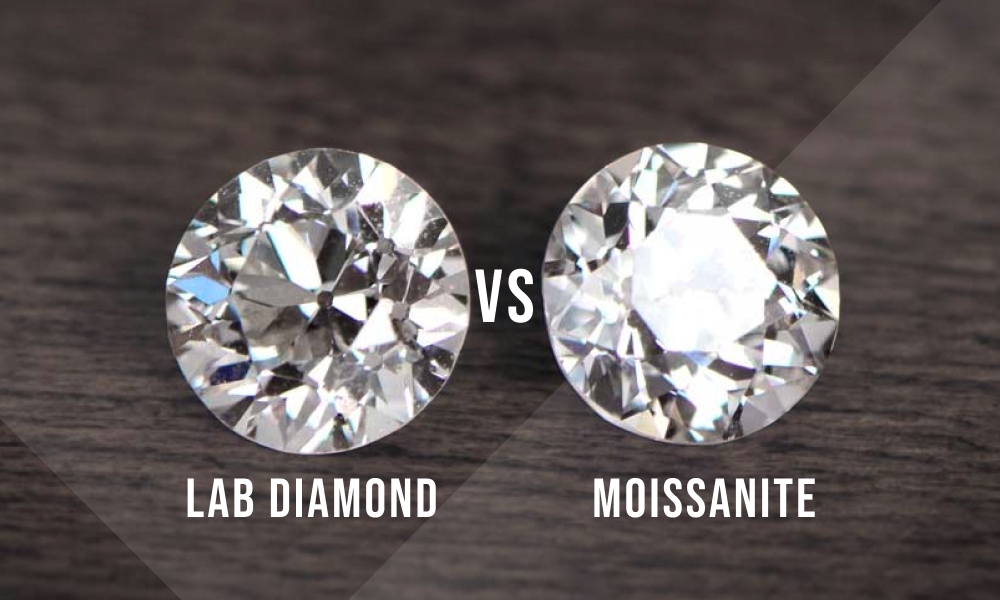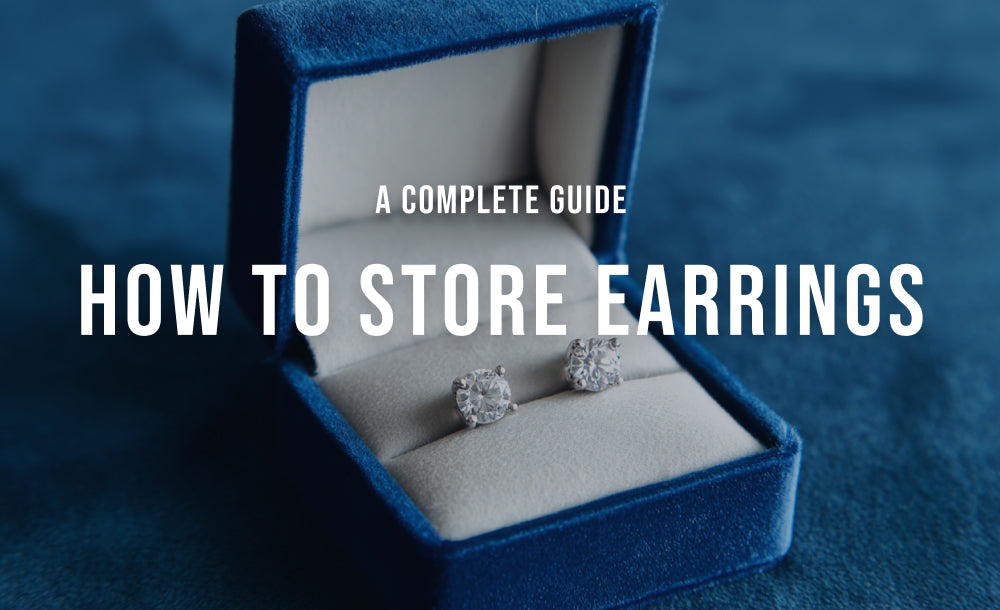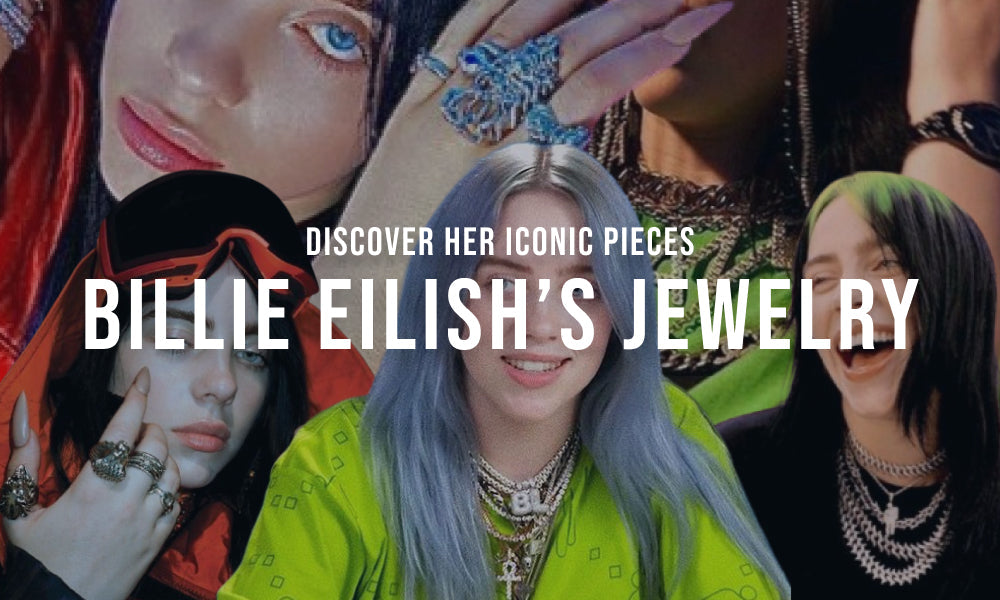Stepping into the world of fine jewelry, one is often faced with the choice between two of the most coveted metals: platinum vs white gold. Both are popular choices for engagement rings and jewelry pieces, each offering its unique charm and distinct set of properties. But what sets them apart? Let’s delve into the intriguing world of these precious metals and unravel the mysteries of platinum vs white gold.
Key Takeaways
👉 Platinum is a naturally white metal with hypoallergenic properties, known for its durability, weight, and tendency to develop a unique patina over time.
👉White gold is an alloy that typically requires rhodium plating to maintain its whiter appearance and needs re-plating every few years, despite being more affordable and having a lighter weight than platinum.
👉The choice between platinum and white gold for engagement rings and other jewelry should consider factors such as cost, durability, weight, hypoallergenic properties, color, response to pressure, and maintenance requirements to suit personal preferences and lifestyles.
What is Platinum

Distinguished by its inherent luster and exceptional durability, platinum is a naturally white metal that shines. As a precious metal, platinum is used in nearly pure form (usually as 95% platinum with the remaining 5% consisting of alloys like cobalt or palladium), making it a pure white metal. Its low reactivity and superior ductility make it a top choice for fine jewelry. The hypoallergenic properties of this rare white metal further enhance its appeal, providing a safe option for individuals with sensitive skin or metal allergies.
A distinctive feature of platinum jewelry is its ability to develop a patina finish when scratched. This happens because the metal gets displaced rather than lost, adding character to the jewelry piece over time. This platinum patina, along with the metal’s naturally white hue, contributes to the allure of platinum engagement rings.
During World War 1 and World War 2, platinum was mostly used for making rifles, engine parts and explosives.
Platinum in Engagement Rings
Choosing a platinum ring for engagement rings extends beyond mere trends, as it’s a thoughtful decision hinged on the metal’s exceptional durability. Platinum’s ability to withstand wear and tear ensures that it remains in pristine condition without the need for replacement, making it a lasting choice for the symbol of eternal love. Additionally, the allure of platinum rings is undeniable, making them a popular choice for couples.
Adding to the charm of platinum engagement rings are:
-
their brighter color
-
hypoallergenic properties
-
suitability for intricate designs
-
the patina finish, considered by some as a representation of the longevity and development of a relationship, adds to their emotional significance
What is White Gold

As an alloy of gold and at least one white metal like palladium, nickel, zinc, copper, or silver, white gold presents an affordable and appealing alternative to platinum. The alloying process enhances the durability and rigidity of the gold, making it more suitable for jewelry as pure gold is inherently soft and prone to rapid deformation.
With varying compositions, white gold can offer different strengths and color tones. For instance, 18k white gold is softer and more malleable, whereas 14k white gold, with a higher concentration of resilient alloys, offers greater strength, durability, and scratch-resistance.
White Gold in Engagement Rings
White gold engagement rings are an attractive option for many, thanks to their affordability and resilience for daily use. They complement other elements of the ring beautifully, such as the setting and diamonds. When considering the strength of white gold, there’s minimal variance between 14k and 18k white gold. However, 14k white gold tends to have a longer lifespan due to a higher concentration of resilient alloys.
18 karat white gold, composed of 75% gold and 25% alloys, strikes a balance between purity and strength, rendering it suitable for engagement rings. According to jewelry experts, a white gold engagement ring paired with a white gold wedding ring achieves a cohesive and elegant look.
Rhodium Plating and Maintenance

A significant aspect of white gold jewelry, rhodium plating, enhances the color and durability of white gold. It boosts scratch resistance, increases whiteness, and in some instances, prevents direct skin contact with nickel. However, this shiny exterior comes with a maintenance requirement. Over time, the rhodium plating can wear off, revealing the underlying yellowish metal and leading to potential discoloration in appearance.
To keep a white gold ring looking its best, it typically requires re-plating in rhodium every 2-3 years, depending on the frequency and intensity of wear. While this adds to the overall cost of maintaining the ring, it ensures that the ring retains its icy shine for years to come.
Differences Between Platinum and White Gold
Having gained a clearer understanding of platinum and white gold, as well as their use in engagement rings, we can now dive into the key distinctions between these precious metals. These differences span across various aspects including:
-
Cost
-
Durability
-
Hypoallergenic properties
-
Weight
-
Color
-
Response to pressure
-
Maintenance requirements
Each factor significantly influences the selection process. Understanding these differences enables you to make an informed choice, whether you’re inclined towards the naturally white and hypoallergenic platinum or the more affordable and lighter white gold. This decision should align best with your personal style, lifestyle, and budget.
Cost
Platinum’s rarity and density make it significantly more expensive than white gold. Here are some reasons why:
-
Platinum is approximately two-and-a-half to five times costlier than white gold.
-
Platinum is used in nearly pure form for jewelry, making it rarer and denser.
-
Platinum has a higher gram content in a piece of jewelry compared to white gold.
These factors contribute to the higher cost of platinum jewelry.
Durability and Strength
When it comes to durability and strength, platinum takes the crown. While platinum develops a patina finish from scratches without losing metal, white gold is actually harder due to its alloy composition, which includes harder metals like palladium, copper, or silver.
Hypoallergenic Properties
If you have sensitive skin or are prone to metal allergies, platinum might be the better choice. Thanks to its purity, usually ranging from 95-98%, platinum is hypoallergenic.
On the other hand, white gold may contain nickel, which has the potential to provoke skin irritation.
Weight
Platinum is denser and heavier than white gold in terms of weight. This is due to its higher density and mass compared to white gold. This can influence the comfort and feel of the jewelry. Some people enjoy the substantial feel of platinum, while others prefer the lighter and less dense sensation of white gold.
Color
If color is a major deciding factor for you, platinum offers a naturally bright white color.
When comparing white gold vs yellow gold, yellow or rose gold, and other metals, it’s important to note that white gold has an off-white or slightly yellowish hue and requires rhodium plating for a whiter appearance.
Response to Pressure
When it comes to withstanding pressure, platinum demonstrates greater resilience and is less prone to bending or warping compared to white gold.
This durability and resistance to pressure make platinum especially suitable for those with a more active lifestyle.
Maintenance
Maintenance is another factor where platinum and white gold differ significantly. Platinum needs only occasional polishing, whereas white gold requires regular rhodium plating and polishing to maintain its appearance.
Platinum vs White Gold: Which One Should You Choose?

The choice between platinum and white gold hinges on personal preferences, lifestyle, and budget. For those with an active lifestyle or who engage in manual work, the strength and resilience of platinum may make it a more suitable choice. Nevertheless, the weight of the rings should also be considered, as white gold is lighter than platinum and may provide a more comfortable experience for some.
From a budget perspective, platinum is typically more expensive due to its scarcity. However, there are some factors to consider:
-
White gold is initially more economical
-
White gold requires regular maintenance such as rhodium plating to preserve its color and luster
-
White gold may be more susceptible to scratching and tarnishing
In terms of aesthetics, platinum flashes a naturally bright white color, maintaining its luster, unlike white gold. The latter showcases an off-white hue and necessitates rhodium plating for a brighter appearance. While white gold is lighter and may offer a more comfortable sensation for some, it is more prone to wear and tear than platinum, which is heavier but more resilient.
Shop White Gold Jewelry at Icecartel
For those favoring white gold, Icecartel boasts a stunning array of white gold jewelry, featuring:
-
Engagement rings
-
Necklaces
-
Bracelets
-
Pendants
Every piece is crafted using high-quality white gold and VVS grade Moissanite to ensure a luxurious product that meets your expectations.
Customers have consistently praised Icecartel’s rings, often receiving compliments on their unique designs. The overall quality of Icecartel’s jewelry collection has been described as exceptional, with numerous individuals characterizing their jewelry pieces as remarkable.
Jewelers at Icecartel have been in the jewelry industry for 25+ years. So if you're looking for customized white gold jewelry then reach out to our team and let's get started!
Summary
In conclusion, both platinum and white gold hold their unique charm and advantages. Platinum, with its naturally white hue, hypoallergenic properties, and exceptional durability, is a prestigious choice for those who value longevity and purity. On the other hand, white gold, with its affordable price point and lighter weight, offers an attractive alternative for those seeking elegance without stretching their budget. Ultimately, the choice between platinum and white gold should reflect your lifestyle, budget, and personal style - ensuring that your piece of jewelry is truly a reflection of you.
Frequently Asked Questions
Which is better platinum or white gold?
Platinum is better than white gold because it is easier to maintain over time and is the most hypoallergenic of all metals due to its purity. It is made of 95% pure platinum compared to white gold's 75% pure gold and 25% other metals.
What is more expensive platinum or gold?
Platinum is more expensive than gold due to its rarity and density, making it more valuable despite looking almost identical to gold.
What is the difference between 14K and 18K white gold and platinum?
The main difference between 14K and 18K white gold is the gold content, with 18K being more pure and closer in purity to platinum. Platinum, on the other hand, is stronger and more durable than both 14K and 18K white gold.
Does platinum scratch easier than gold?
Yes, platinum does scratch easier than gold, despite being more durable overall.
What kind of maintenance does white gold require?
To maintain its color and luster, white gold usually requires regular rhodium plating and polishing, typically needing reapplication every 2-3 years, depending on wear.



































































